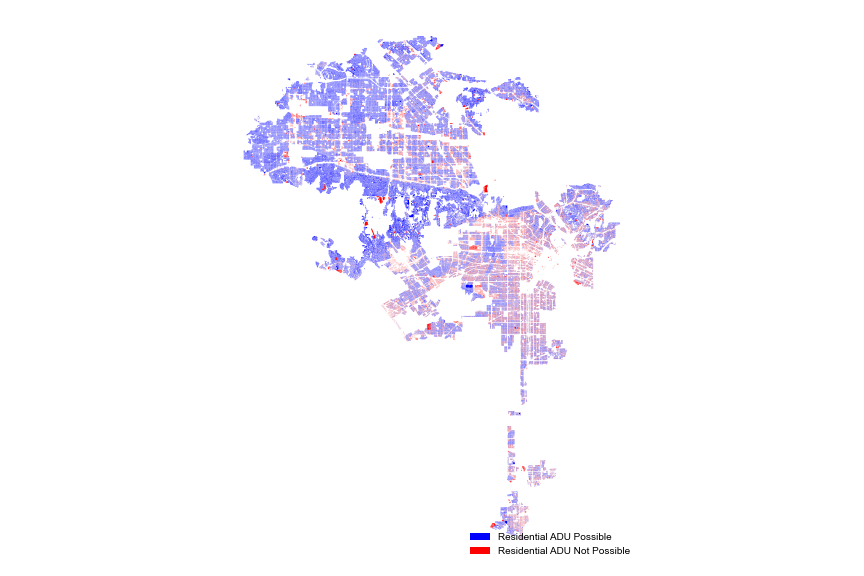Los Angeles ADUs: A Hidden Solution to the Housing Crisis
The City of Los Angeles faces an unprecedented housing challenge. Under state mandates, LA must add 456,643 new housing units by 2029—a staggering figure that has planners, developers, and residents wondering: where will all these homes go?
New analysis of Los Angeles property records reveals a potential answer: nearly three-quarters of the city's residential lots could accommodate an Accessory Dwelling Unit (ADU).

Strategic Importance for LA's Housing Future
What makes ADUs particularly strategic is their ability to add density in areas where other forms of development face significant barriers. Approximately 70% of LA's residential land is zoned for single-family homes, making traditional multi-family development impossible in most neighborhoods. ADUs offer a way to thoughtfully increase density while maintaining neighborhood character.
The math is compelling: if just half of the eligible properties added an ADU over the next decade, it would create nearly 200,000 new homes—addressing almost 44% of LA's RHNA requirement. This represents a significant opportunity for distributed, neighborhood-scale density that could help meet the city's housing needs without dramatically changing community character.
Geographic Distribution
Our analysis reveals that ADU potential isn't limited to specific neighborhoods—it's distributed across the city. This geographic spread is crucial for several reasons:
- It could help address housing needs in areas where larger multi-family developments are impractical
- It provides opportunities for housing growth in high-resource neighborhoods that have historically resisted density
- It allows for organic, gradual neighborhood evolution rather than sudden transformation
Looking Ahead
The data suggests that ADUs represent more than just a trendy housing solution—they're a crucial tool in addressing Los Angeles's housing shortage. Their distributed nature and ability to work within existing neighborhood frameworks make them uniquely valuable in the city's housing ecosystem.
While ADU construction has risen dramatically since California streamlined regulations in 2017, there remains an enormous gap between potential and reality. As Los Angeles grapples with its housing challenges, unlocking this potential will require continued policy innovation, particularly around financing and permitting. The numbers show the opportunity is there—the question is whether the city can help homeowners seize it.
Methodology: Analysis based on comprehensive review of Los Angeles property records and RHNA allocation documentation. ADU eligibility was determined using current Los Angeles Municipal Code requirements for detached ADUs.